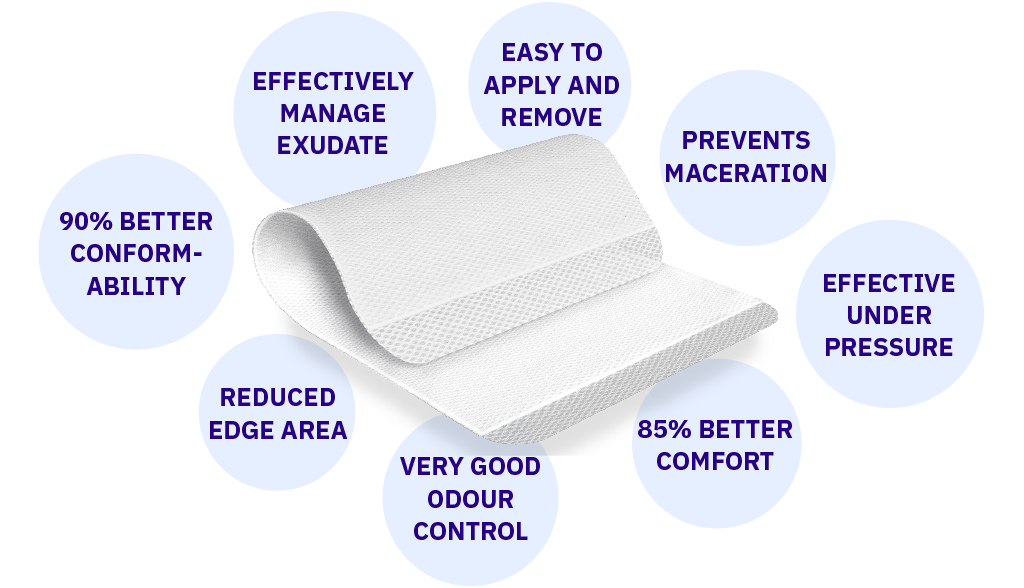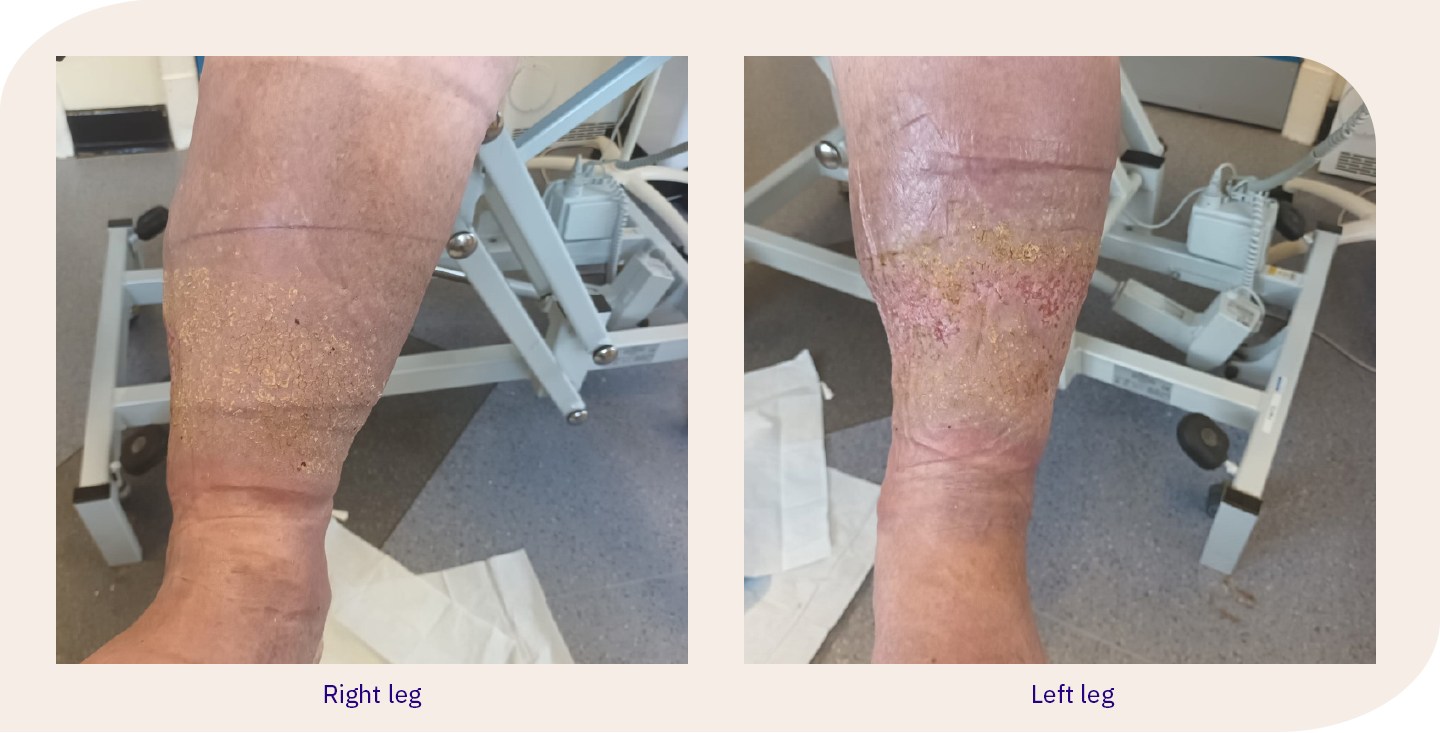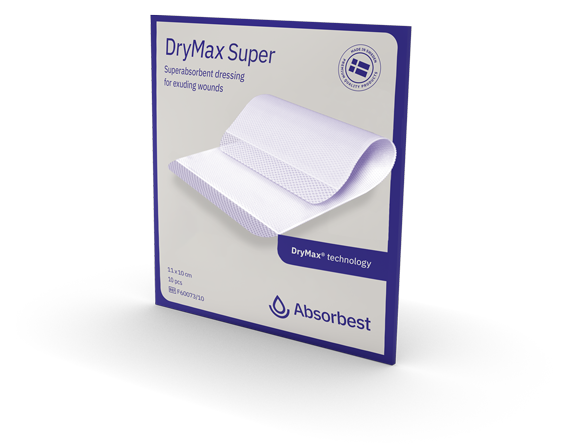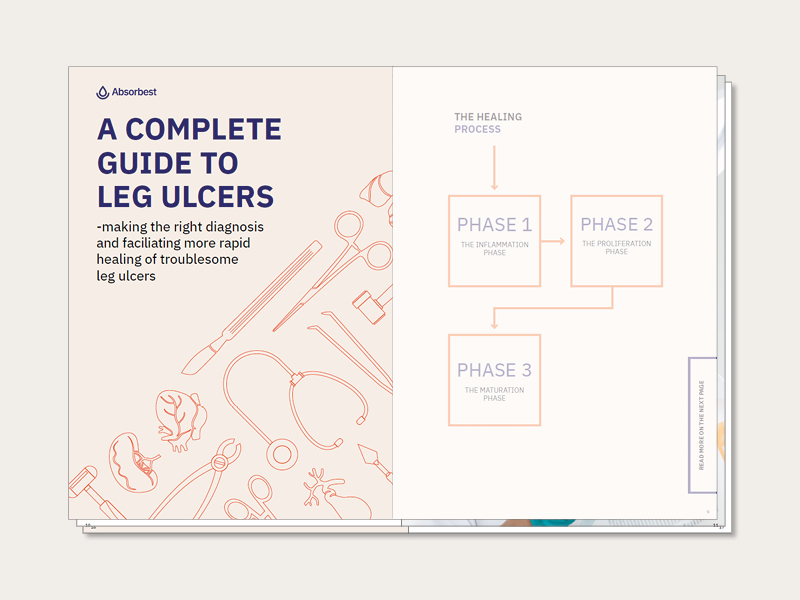The current study’s results indicate that the evaluated product is suitable for managing various exuding wound types (low to very high) when used as a primary or secondary dressing. It also performed well under a range of commercially available compression therapy products. The dressing was reported as being well tolerated by the patient, and according to the health professionals involved in the evaluation, it was easy to apply and remove. The dressing was also reported to have very good absorption and odour control. The health professionals observations suggested that the evaluated superabsorbent promoted wound healing and protected the peri-wound skin from maceration and erythema.
DryMax Super has been demonstrated to effectively manage exudate across various types of wounds, including leg ulcers, pressure ulcers, diabetic foot ulcers, burns, and wounds associated with lymphoedema. The dressing promotes wound healing by absorbing exudate and retaining it within its core, which helps prevent peri-wound maceration and maintains a moist wound environment. The dressing was used in conjunction with compression in approximately half of the patients. DryMax Super performed well under various compression therapy products, maintaining its integrity and effectiveness under pressure. DryMax Super has great versatility and can be used both as a primary and secondary dressing for many exuding wounds, enhancing its utility in clinical settings.
Over the 4-week evaluation period, the health professionals observed a reduction in macerated and excoriated periwound. Average periwound condition reduced from 30% macerated at initial assessment to 8% at final assessment.

85% of the patients reported that they found DryMax Super to be much better or better than the previous dressing used in terms of reported comfort. In addition, 90% said it was much better or better than the previous dressing used in terms of conformability. The dressing edges are specially designed with a reduced edge area and was rated better or much better by 90% of the clinicians.

A 51-year-old man suffered from ulcers on both of his legs due to venous insufficiency. These ulcers were persistent for nearly two years and were accompanied by weeping oedema. The man also contended with other health concerns, including hypertension, type 2 diabetes, and obesity, which pose additional challenges to the treatment and healing process.

Condition of wound bed: Both wounds were highly exuding with a moderate malodour. Exudate characterised as serous and seropurulent. Wound bed 50% slough, 50% granulation.
Condition of periwound: Dry and eczematous.
Previous dressing used: An absorbent product had previously been tried, with about 3 dressing changes per week.


Condition of wound bed: 10% slough, 90%granulation. The odour was reduced to slight.
Condition of periwound: Dry/eczematous.
Outcome: Good absorption and retention of exudate.
Result: Reduced weeping oedema, reduced maceration, improvement in peri wound skin and wound bed. Protected granulation tissue.

Experience the difference and compare the outcome with our superabsorbent dressing. Designed to create a simple wound healing process and optimal healing environments to support clinicians giving quality care.
A premium dressing made in Sweden.

This complete guide to leg ulcers will help you to understand various wounds, what distinguishes these, and how they can best be treated during and after the healing process.
Mark Collier, “A clinical observational case series evaluation of a superabsorbent dressing on exudating wounds”. British Journal of Nursing, 2024, Vol 33, No 12 (Tissue Viability Supplement)